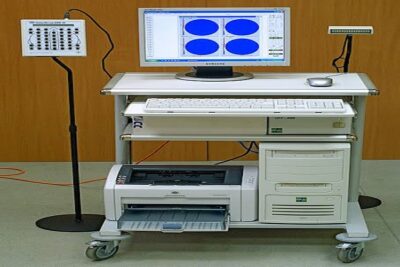Video EEG
Video EEG
The purpose of video EEG monitoring is to record brain wave activity between and during seizures, and to have a video picture of what happens during a typical seizure. … A patient is first being evaluated for epilepsy or other seizure disorder, and the initial EEG testing was not definitive. An ambulatory EEG test makes a recording of your brain’s activity over a number of hours or days. EEG wires are placed on your scalp, like in a routine EEG, then attached to a special recorder that is slightly larger than a portable cassette player. An ambulatory electroencephalogram (EEG) is a neurodiagnostic test that measures and records the electrical activity in your brain. Unlike an EEG, an ambulatory EEG allows an extended recording in a patient’s home. The patient is able to move around and is not required to stay in the hospital for the recording.

Ambulatory EEG (AMB EEG) An Ambulatory EEG (Amb EEG) is a safe, painless test, which will record the electrical activity produced by your brain. An Amb EEG uses a digital recording system to record brain activity for 24-72 hours while you go about your daily routine. For example, if you have a seizure disorder, the EEG can show where abnormal activity in your brain comes from and can help distinguish between generalized or focal seizures. An EEG is of value for diagnosing epilepsy only if it detects patterns typical of epilepsy. … It can also be used to confirm brain death. The electrodes are connected with wires to an instrument that amplifies the brain waves and records them on computer equipment. Once the electrodes are in place, an EEG typically takes up to 60 minutes. Testing for certain conditions require you to sleep during the test.
Expert EEG Monitoring in Nagpur

